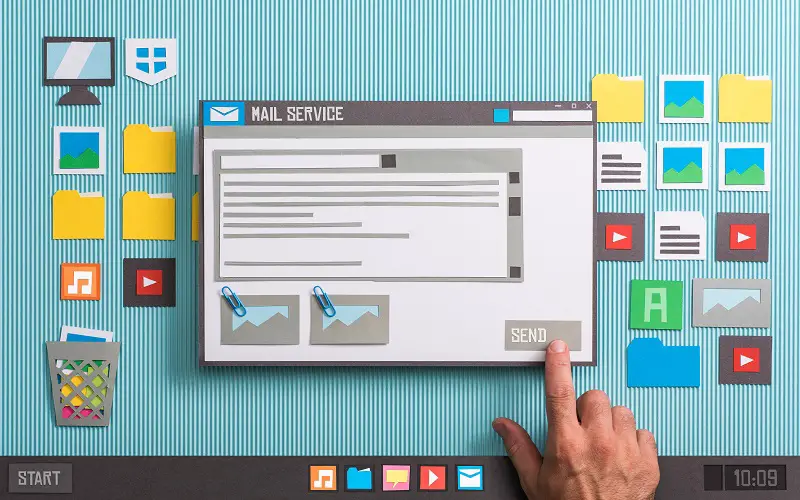Email marketing remains the surest way to enhance your relevance in this highly competitive marketing landscape; your subscribers want to hear from you regularly, but you can’t continuously dish out emails to your subscribers without IP warming. IP warming will ensure that you don’t waste resources in your bid to communicate with your customers; rather than waste resources on emails, you can seek alternative means of communication.
Incidentally, email marketing is still your most cost-effective way of acquiring new customers and retaining old ones. According to reports from DMA, for every $1 you spend on email marketing, you will recoup $40 on average. On the other hand, McKinsey reveals that email is a 40 times more effective way to acquire customers than social media such as Facebook or Twitter.
Global email users projection should hit the 376.4 billion mark in 2025. While this projection shows that email marketing will still be in the top league, you can’t bombard your subscribers with email without IP warming.
What is IP (internet protocol) warming?
IP warming is gradually scaling up the marketing emails you send to your mailing list to build the necessary trust with your users’ internet service providers (ISPs) and increase the open and click-through rate for your emails.
Why is IP warming essential for effective email marketing?
Any Email you send or receive across the network comes as packets of data, and you must have an IP address to facilitate it. These packets of data will pass if an ISP knows your IP address; ordinarily, the ISP will refuse the passage.
IP warming enhances the dedication of your IP address and ensures complete control of your sender’s reputation. Your email deliverability solely lies on your sender’s reputation and affects your performance; if you don’t have a good sender history, your ISP will activate measures to defer or block messages from your IP.
With IP warming, you can slowly scale up the marketing emails sent to your mailing lists.
What are the main steps of IP warming?
Now that we have discussed the essentials of IP warming, you need an ultimate guide to understand the process. You must remember that you can’t bombard your emails subscribers; you start at a low gear and gradually scale up your email mailing list; for instance, if you have about 100,000 email addresses in your database, your IP warming-up process should look something like this:
Day 1 = 100 emails
Day 2 = 200 emails
Day 3 = 450 emails
Day 4 = 1,000 emails
Day 5 = 2,000 emails
Day 6 = 5,000 emails
Day 7 = 8,000 emails
Day 8 = 10,000 emails
As your email sends increase slowly and gradually, you are effectively warming up your IP address for the ISP. The gradual emails you send indicate that you can send 100 good emails and get engagement from your subscribers.
You can invariably conclude that customer engagement is directly proportional to the volume of emails sent; the more customer engagement, the higher your chances of sending more emails. Since your customer engagement has risen to 100 in the first step, you can proceed to send 200 emails in the second step.
It is critical to warm up your IP efficiently; if you fail, you will have problems with your sender’s reputation. Now, let’s look at the ultimate guide to IP warming.
1. Authenticate and synchronize your infrastructure and pieces
You must first update your DNS records; after that, you secure your system, pass (sender policy framework) SPF, and sign in with (domain key identified mail) DKIM. It will even work better if you ask your ISPs to set up a white-label domain to prove that you are a legitimate sender when you send emails through them.
2. Take advantage of feedback loops
The time it takes you to do IP warming up is critical for you; you must avoid any situation that may damage your IP reputation, like sending emails to such customers who are not interested in receiving emails from you. You must remove all email addresses that have raised complaints from your database.
Feedback loops enable you to remove email addresses that have marked your email as spam. You leverage feedback loops to send emails to only subscribers who want to hear from you; this helps to improve your future IP warming-up campaign.
3. Send your emails to customers you are sure of their engagement
Warm-up emails should be sent to subscribers you are sure will open, click through, and reply; such subscribers will be reluctant to mark your emails as spam or discard them without reading them. A warm schedule will help you to facilitate sending emails to your most engaged and active subscribers first.
It lets you quickly build a good sender reputation and clean your email list. If you have an email validation services provider, you can easily remove email addresses that are invalid or inactive.
4. Regularly check your email metrics
Email metrics such as delivery rate, bounce rate, click rate, open rate, and spam rate will give you a measure and analysis of how successful you are with your email campaign. Analyzing email metrics will guide you in taking corrective steps to ensure success in your campaign.
5. Ensure your email campaigns are valuable and relevant
Your customer base is very crucial to the success of your email campaign; the emails you send must be relevant and should provide value to your subscribers. IP warming period is not the time to create uncertainty and ambiguity; your subscribers may not dispose favorably of a new strategy. Stick to what has been going in your favor.
Conclusion
Whatever IP warming strategy you take must be top-notch; avoid uncertainties, check your metrics, and work hard towards enhancing engagement.




